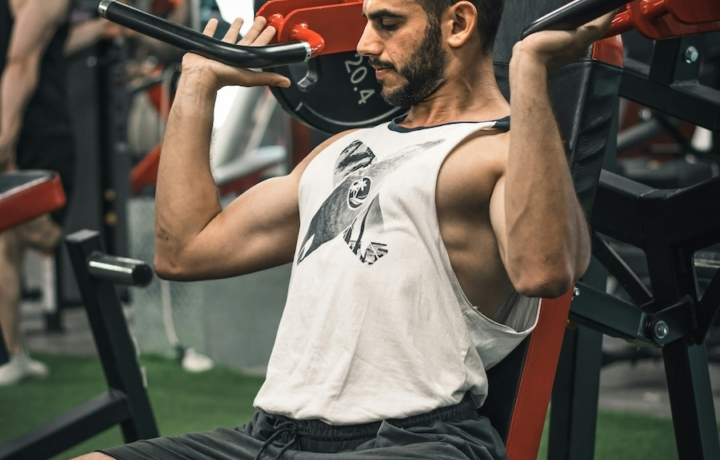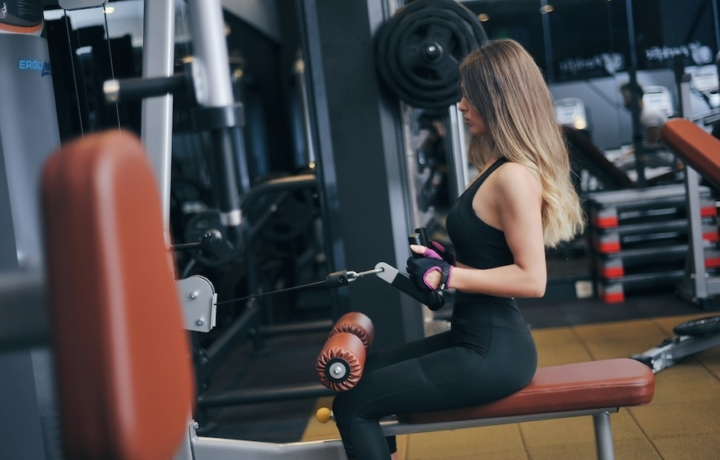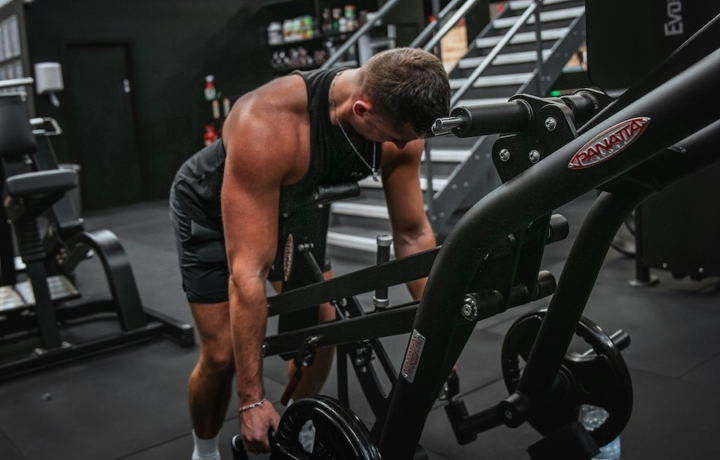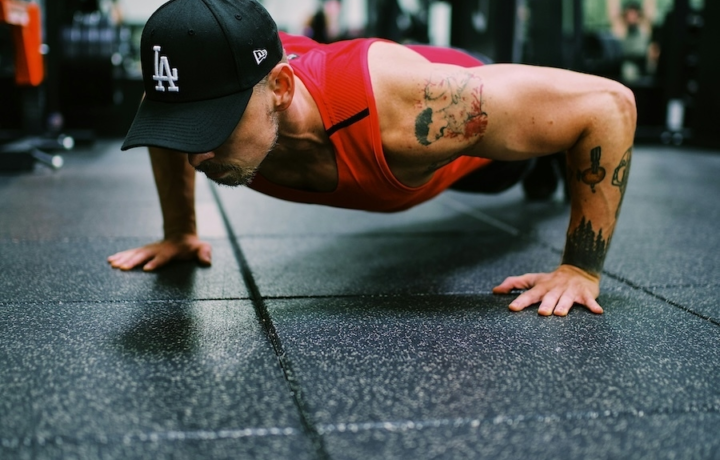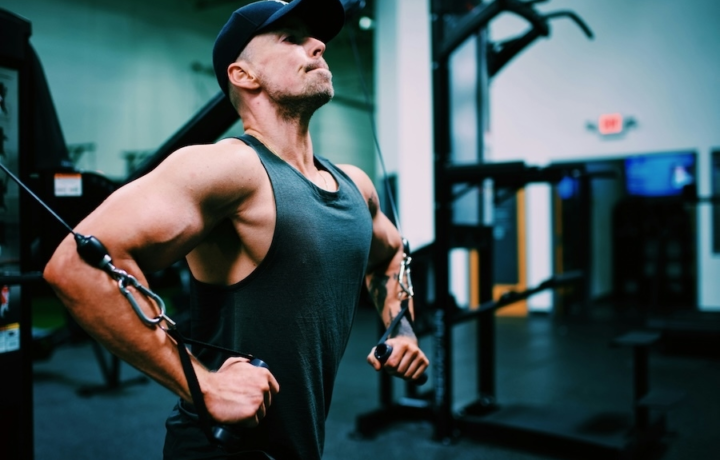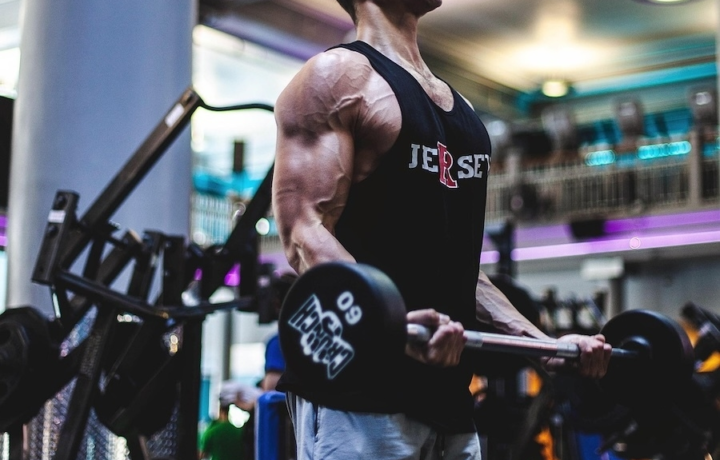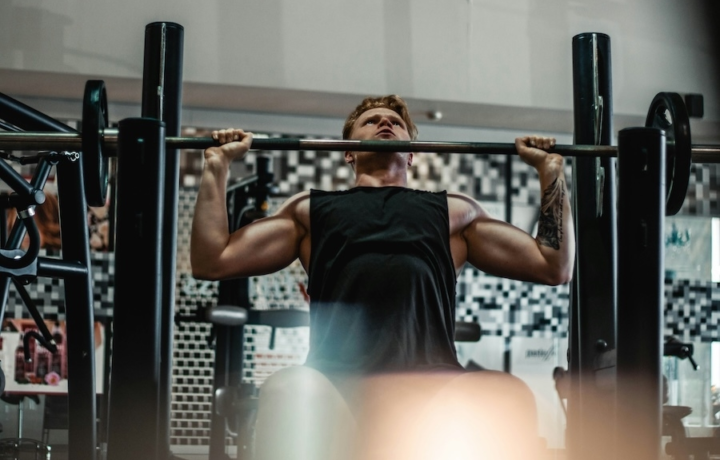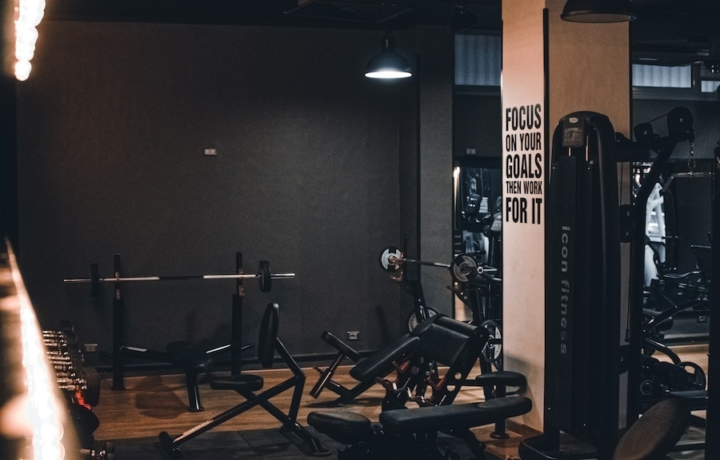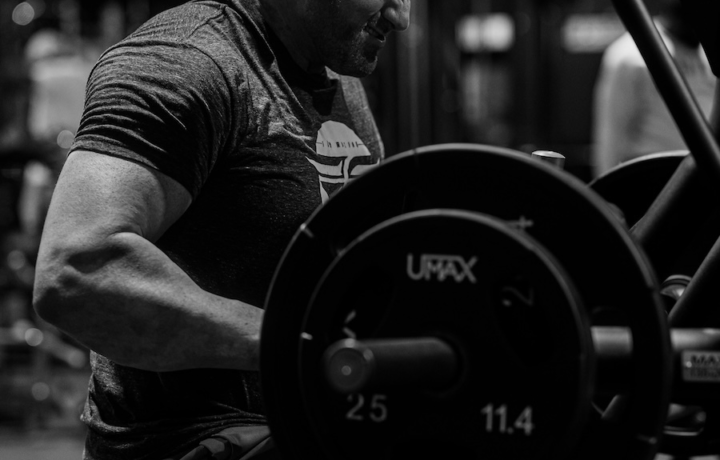Exercise
Barbell Bent Over Row

Barbell Bent Over Row
How to Perform
- Stand with your feet shoulder-width apart and grasp the barbell with an overhand grip slightly wider than shoulder width.
- Hinge at your hips, keeping your back flat and chest up until your torso is nearly parallel to the floor.
- Allow the barbell to hang directly below your shoulders with your arms fully extended and your core braced.
- Take a deep breath in and hold it to maintain core tension.
- Pull the barbell toward your lower ribcage by driving your elbows back and squeezing your shoulder blades together.
- Keep your elbows close to your body and maintain a neutral wrist position throughout the movement.
- Exhale at the top of the movement, then slowly lower the barbell back to the starting position while maintaining control.
- Keep your torso angle consistent throughout all repetitions and avoid using momentum by jerking or swinging the weight.
Important information
- Keep your lower back in its natural arch and avoid rounding your spine at any point during the exercise.
- Maintain a slight bend in your knees to reduce stress on your lower back and hamstrings.
- Focus on pulling with your back muscles rather than your arms by initiating the movement by retracting your shoulder blades.
- If you feel pain in your lower back, decrease the weight or check your form with a qualified fitness professional.

Barbell Bent Over Row
Exercise Details
Primary Muscles
Muscle Groups
Mechanic
Risk Areas
Built for progress
Take the guesswork out of training
Create personalized AI-powered workout plans that evolve with you. Train smarter, track every rep and keep moving forward, one workout at a time.






The barbell bent over row stands as one of the most effective compound movements for developing a strong, well-defined back. This classic exercise primarily targets the latissimus dorsi and trapezius muscles while engaging numerous secondary muscle groups throughout the posterior chain. For intermediate lifters, this movement offers an ideal balance of challenge and accessibility, allowing for significant strength and muscle development.
When performed correctly, the barbell bent over row creates tremendous activation across the entire back complex. The latissimus dorsi (lats) bear the brunt of the workload, contributing to that coveted V-taper physique. Meanwhile, the trapezius muscles—particularly the middle and lower portions—undergo substantial stimulation, helping to create thickness and definition across the upper back. Additional engagement occurs in the rhomboids, rear deltoids, and even the biceps as assisting muscles.
In bodybuilding circles, the bent over row is revered for its hypertrophy-inducing potential. The exercise allows for controlled time under tension and significant loading, creating the mechanical stress necessary for muscle growth. Many successful bodybuilders credit this movement as instrumental in developing the three-dimensional back thickness that stands out on stage.
Powerlifters value the bent over row for its tremendous carryover to competition lifts. The strength developed through consistent rowing directly translates to improved deadlift performance by reinforcing proper back positioning under load. Additionally, the enhanced upper back stability contributes to a more solid platform during heavy bench pressing.
Few exercises match the barbell bent over row's ability to build functional pulling strength. The movement pattern closely mimics many real-world lifting scenarios, making it exceptionally practical. Progressive overload with this exercise builds not just aesthetic muscle but also genuine strength that transfers to athletic performance. The stabilization demands also strengthen the lower back and core, creating a more injury-resistant physique capable of greater performance across all lifting endeavors.
FAQ - Barbell Bent Over Row
The barbell bent over row primarily targets the latissimus dorsi (lats) and trapezius muscles. It also engages the rhomboids, rear deltoids, biceps, and erector spinae as secondary muscles, making it one of the most complete upper back exercises available.
Stand with feet shoulder-width apart, bend at the hips until your torso is nearly parallel to the floor, keep your back flat and core tight, then pull the barbell to your lower ribcage while keeping elbows close to your body. Lower the weight in a controlled manner and repeat, maintaining a neutral spine throughout the movement.
Maintain a neutral spine position (not rounded) and hinge properly at the hips rather than bending at the waist. Brace your core throughout the movement, avoid using excessive weight, and consider alternatives like chest-supported rows if pain persists despite form corrections.
Most lifters should perform bent over rows 1-2 times per week, allowing 48-72 hours of recovery between sessions. For optimal back development, include them as a primary movement on your pulling or back-focused training days.
Yes, effective alternatives include chest-supported rows, single-arm dumbbell rows, seated cable rows, and T-bar rows. These variations can reduce lower back stress while still targeting similar muscle groups, making them suitable replacements depending on your goals and equipment availability.


